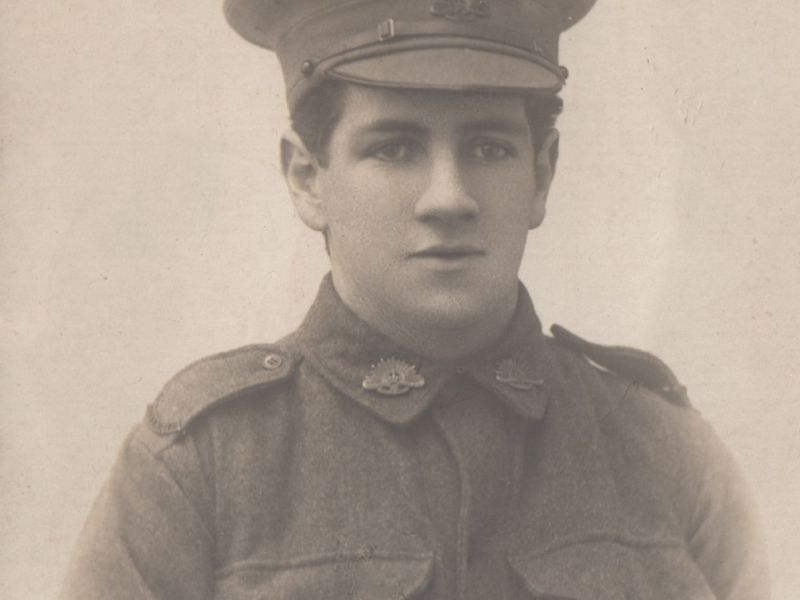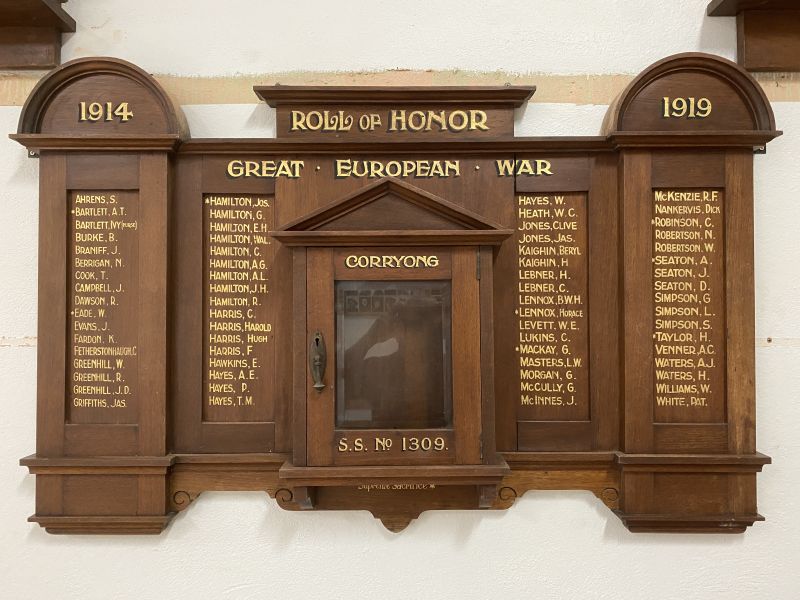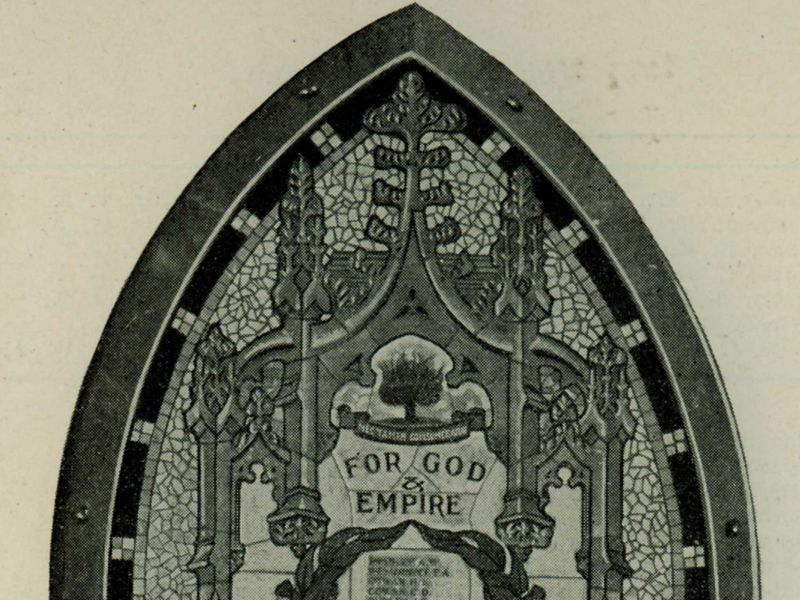John Noel Robertson
John was born on Christmas Day, 1897 to Rev Colin C Robertson and Margaret Gray Robertson (nee Dixon) at Cranbourne, 40 kilometres south-east of Melbourne. He would be the middle of nine children, with four sisters and four brothers. In the family photograph he is standing at the back on the left.
The Robertson family moved around as their father, a Presbyterian Minister, changed parishes. This would include Cranbourne (1897 to 1901), Corryong (1904 to 1907) and Whangharie, New Zealand (1910 - 1913).
On the 31st of May 1913, John began employment with the Victorian Railways, working at Spencer Street Station in Melbourne as a junior clerk. His annual salary was £55. It’s quite possible that he was boarding in Ascot Vale at this time. He was intending to study and become a minister of the Presbyterian Church, like his father, after he returned from the war.
John’s file at the National Archives of Australia contains a letter from his parents, dated April 26th 1916, stating that because John is under age, they gave their permission for him to enlist in the 1st AIF. At this stage the family was living in Moe in the Gippsland region of eastern Victoria. In less than a year, Colin and Margaret would receive a letter informing them of their son’s death in action.
John enlisted on the 12th of May 1916 in Melbourne, being allocated the regimental number 2750. His general training was undertaken at the Broadmeadows Camp, just outside of Melbourne. In mid-August he was promoted to Corporal, even though he was still only nineteen years old. John was a member of the 6th Reinforcements for the 60th Battalion and, on the 2nd of October embarked on HMAT A71 Nestor and proceeded overseas to join the battalion. They arrived at Plymouth on the 16th of November and were transferred to the 15th Training Battalion based at Fovant on the Salisbury Plains in Wiltshire.
Two months later they proceeded overseas, marching in to the 5th Australian Division Base Depot at Etaples, France on the 17th of January 1917. One week later the 6th Reinforcements joined the 60th Battalion currently billeted at E Camp near Fricourt, France. The 60th was part of the 15th Infantry Brigade of the 5th Australian Division.
The 60th Battalion’s War Diary includes this entry for the 13th of March 1917;
“Patrols were sent out under officers, returned after about 2½ hours.Our right flank was shelled heavily by 6.9s and 4.2s. Improvement of trenches and posts continued. The carriage of rations, hot food and drinks continues to give satisfaction. Casualties killed 1 O.R. (other ranks) wounded 1 Off. (Officer), 3 O.Rs”
John was the O.R. listed as killed in action, although it’s not known whether he was part of the patrol or killed by shellfire. He was buried at the Bulls Road Military Cemetery in Flers, France. John’s older brother, Bill (Sergeant William Gray Dixon Robertson of A Squadron, 13th Light Horse) visited John’s grave during the war.
Trooper J.N. Mackinnon mentioned John in a letter to a relative at Moonee Ponds; “I find it hard to realise that Noel Robbie fatally stopped one. Chaps like him are a big loss.”
John is remembered on the Australian War Memorial Roll of Honour. He was also listed on the Honour Roll of the Ascot Vale Presbyterian Church, however it was destroyed by an arsonist in 2004. For his service, John was awarded the British War Medal and the Victory Medal.

 Stephen Learmonth
Stephen Learmonth
